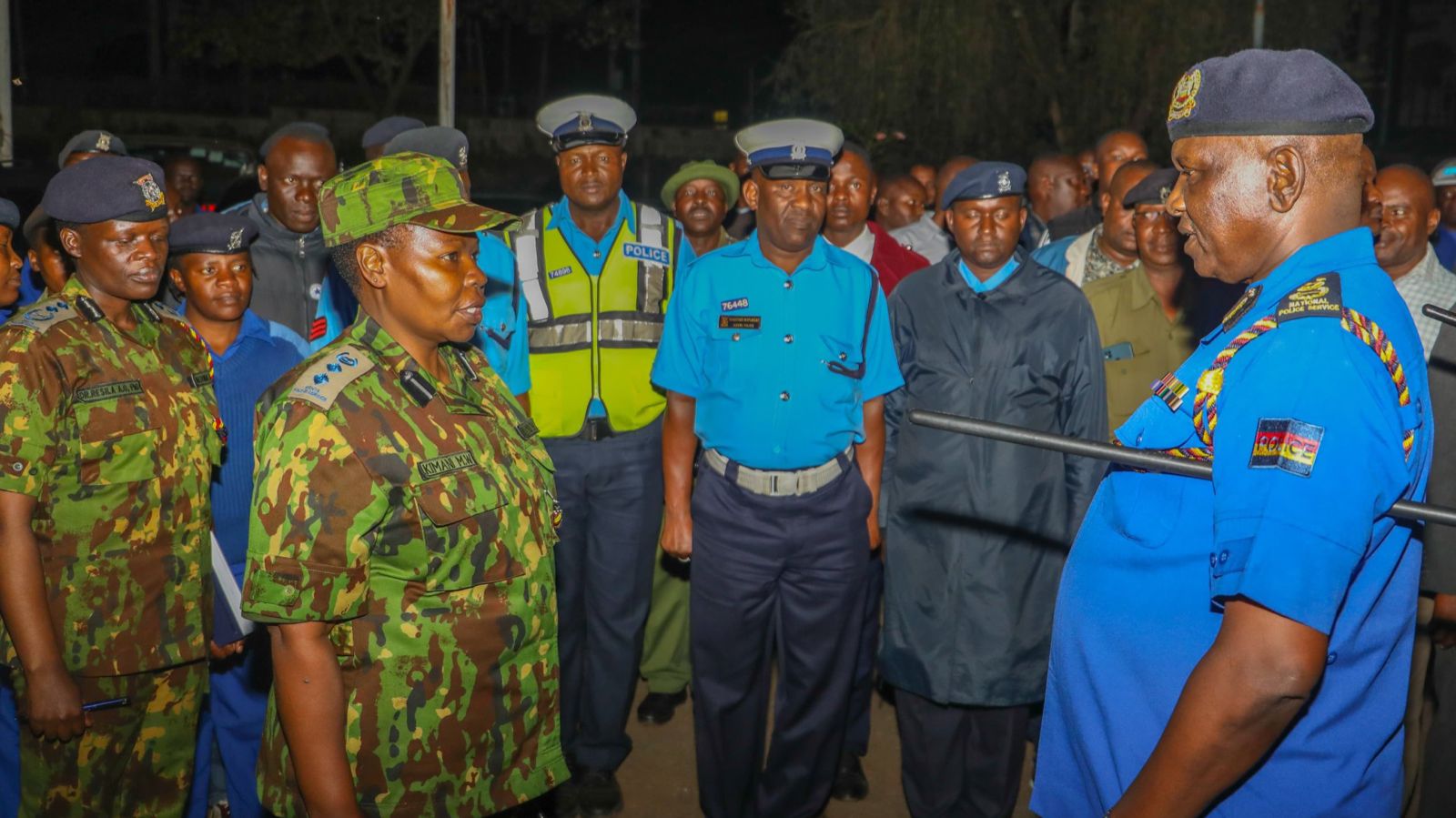Established under the Wildlife Conservation and Management Act of 1989 and reinforced by Act No. 47 of 2013, the KWS operates as a state corporation under the Ministry of Tourism and Wildlife. Its mandate includes conserving Kenya’s biodiversity, managing national parks and reserves, enforcing wildlife laws, and supporting national security through counter-terrorism and anti-poaching efforts. With over 5,000 personnel, including rangers, cadets, and specialists, KWS plays a critical role in protecting Kenya’s 26,000+ wildlife species and 54 national parks and reserves.
For businesses, KWS’s work directly impacts tourism—contributing 10% to Kenya’s GDP (Ksh. 1.2 trillion, per WTTC 2024)—and ensures the safety of natural assets that draw 1.5 million visitors annually. The KWS salary per month reflects the government’s investment in this workforce, influencing their effectiveness and, by extension, economic stability.
KWS Salary Structure: An Overview
The KWS salary per month is determined by the Salaries and Remuneration Commission (SRC), aligned with public sector pay scales, and reviewed every four years (next cycle: 2025/2026). Salaries vary by rank, education, experience, and job function, supplemented by allowances tailored to the demanding nature of conservation work. Below is a comprehensive breakdown based on SRC data, KWS reports, and media analyses, adjusted for 2025 inflation (5-7%, per KNBS 2024).
KWS Salary Per Month by Rank and Role
Entry-Level Positions
- Community Scouts
- Basic Salary: Ksh. 15,000 – Ksh. 25,000
- Allowances: Ksh. 5,000 – Ksh. 10,000 (risk, commuter)
- Total Earnings: Ksh. 20,000 – Ksh. 35,000
- Role: Local recruits supporting ranger patrols, often part-time.
- Rangers (Fresh Recruits)
- Basic Salary: Ksh. 25,000 – Ksh. 40,000
- Allowances: Ksh. 10,000 – Ksh. 15,000 (housing, risk, hardship)
- Total Earnings: Ksh. 35,000 – Ksh. 55,000
- Role: Frontline wildlife protection, requiring KCSE D+ minimum.
- Cadets (Assistant Warden I, Pre-Commissioning)
- Basic Salary: Ksh. 24,520 (post-initial training)
- Allowances: Ksh. 5,000 – Ksh. 10,000
- Total Earnings: Ksh. 29,520 – Ksh. 34,520
- Role: Graduates in training, transitioning to officer status.
Mid-Level Positions
- Experienced Rangers
- Basic Salary: Ksh. 50,000 – Ksh. 80,000
- Allowances: Ksh. 15,000 – Ksh. 25,000
- Total Earnings: Ksh. 65,000 – Ksh. 105,000
- Role: Seasoned field operatives, often with 5+ years’ experience.
- Assistant Warden II (Commissioned Officer)
- Basic Salary: Ksh. 70,000 – Ksh. 90,000
- Allowances: Ksh. 15,000 – Ksh. 20,000
- Total Earnings: Ksh. 85,000 – Ksh. 110,000
- Role: Junior officers with degrees, leading small units.
- Laboratory Technologist / Accounts Assistant
- Basic Salary: Ksh. 40,000 – Ksh. 60,000
- Allowances: Ksh. 10,000 – Ksh. 15,000
- Total Earnings: Ksh. 50,000 – Ksh. 75,000
- Role: Technical support staff in forensics or finance.
Senior-Level Positions
- Warden (Mid-Level Manager)
- Basic Salary: Ksh. 100,000 – Ksh. 150,000
- Allowances: Ksh. 20,000 – Ksh. 30,000
- Total Earnings: Ksh. 120,000 – Ksh. 180,000
- Role: Park or regional supervisors.
- Senior Warden / Specialists (e.g., Scientists, Ecologists)
- Basic Salary: Ksh. 200,000 – Ksh. 300,000
- Allowances: Ksh. 30,000 – Ksh. 50,000
- Total Earnings: Ksh. 230,000 – Ksh. 350,000
- Role: PhD holders or senior conservation experts.
- Director General
- Basic Salary: Ksh. 1.2 million – Ksh. 1.5 million
- Allowances: Ksh. 300,000 – Ksh. 400,000
- Total Earnings: Ksh. 1.5 million – Ksh. 1.9 million
- Role: Top executive overseeing KWS operations.
Note: Figures are estimates based on 2024 data, adjusted for 2025 inflation. Actual salaries may vary with the upcoming SRC review.
Key Allowances in the KWS Salary Structure
Allowances significantly boost the KWS salary per month, reflecting the unique demands of wildlife conservation:
- Housing Allowance: Ksh. 5,000 – Ksh. 50,000, higher in urban postings.
- Risk Allowance: Ksh. 5,000 – Ksh. 20,000, for exposure to poachers or wildlife threats.
- Hardship Allowance: Ksh. 5,000 – Ksh. 15,000, for remote areas like Tsavo or Lamu.
- Commuter Allowance: Ksh. 3,000 – Ksh. 15,000, covering transport costs.
- Field/Per Diem Allowance: Ksh. 2,000 – Ksh. 10,000 daily during patrols or missions.
- Leave Allowance: Ksh. 10,000 – Ksh. 20,000 annually.
These benefits make KWS salaries competitive, though officers in high-risk zones often argue for higher risk pay.
Data Insights: KWS Salaries in Context
- National Average: Kenya’s average monthly wage is Ksh. 30,000 (KNBS, 2024), with entry-level rangers earning slightly above and senior staff far exceeding it.
- Public Sector Comparison: KWS rangers align with Administration Police constables (Ksh. 27,000 – Ksh. 38,000), while senior wardens match Cabinet Secretaries (Ksh. 990,000).
- Workforce Size: KWS employs over 5,000 staff, with an annual payroll exceeding Ksh. 3 billion (2024 MoT estimates).
- Budget Allocation: The 2024/2025 KWS budget is Ksh. 12 billion, with 25% for personnel costs.
These figures underscore KWS’s role as a significant employer, though its salaries lag behind private sector equivalents for skilled roles (e.g., ecologists at NGOs earning Ksh. 400,000+).
Factors Influencing KWS Salary Per Month
Several dynamics shape KWS earnings:
- Government Funding: The Ksh. 12 billion budget (2024/2025) limits wage hikes amid a 4.3% fiscal deficit (Treasury, 2024).
- SRC Reviews: The 2025/2026 cycle may adjust salaries by 5-10%, pending economic recovery.
- Education and Experience: Graduates (e.g., Cadets) start higher than KCSE holders (Rangers).
- Job Risk: Field roles command allowances, unlike office-based staff.
- Tourism Revenue: KWS collected Ksh. 5 billion in park fees (2023/2024), indirectly funding salaries.
For businesses, these factors highlight the interplay between public funding and operational capacity—a parallel to private sector budget constraints.
Implications for Kenyan Businesses
The KWS salary per month impacts businesses in tangible ways:
- Tourism Revenue: Well-paid rangers ensure park safety, supporting Ksh. 200 billion in annual tourism earnings (WTTC, 2024).
- Economic Stability: Effective wildlife protection preserves biodiversity, a draw for eco-tourism investments.
- Security Costs: Underpaid staff may compromise anti-poaching efforts, increasing business risks (e.g., ivory trade losses).
- Employment Benchmark: KWS salaries set a standard for conservation-related private sector pay.
A 2024 KEPSA report notes tourism and conservation contribute 12% to employment (1.5 million jobs)—KWS’s workforce stability is a business asset.
Challenges in KWS Compensation
Despite its importance, the KWS salary structure faces hurdles:
- Pay Disparities: The Director General earns 50 times a scout’s salary, raising equity concerns.
- Inflation Erosion: Rising costs (6% CPI, 2024) outpace wage growth, especially for junior staff.
- Funding Constraints: Reliance on government and donor funds limits raises, with only Ksh. 3 billion for salaries in 2024/2025.
- Morale Risks: A 2023 KWS survey found 55% of rangers felt undercompensated, impacting retention.
Businesses should note these challenges, as they could affect KWS’s ability to secure parks and reserves critical to tourism.
Future Outlook for KWS Salaries in 2025 and Beyond
Looking ahead, several trends may reshape KWS salary per month:
- 2025 SRC Review: A 5-10% increase could raise ranger pay to Ksh. 40,000 – Ksh. 60,000 and wardens to Ksh. 130,000 – Ksh. 200,000.
- Tourism Growth: Projected 7% tourism GDP rise (WTTC, 2025) may boost park revenue, funding salaries.
- Tech Integration: Roles in drone surveillance or forensics could command premiums, elevating skilled pay.
- Donor Support: Partnerships (e.g., WWF, USAID) may supplement wages for anti-poaching units.
For businesses, a better-paid KWS promises enhanced conservation, supporting tourism and investment—a win for Kenya’s economy.
How to Join KWS and Earn These Salaries
Interested in a KWS career? Here’s the pathway:
- Eligibility:
- Rangers: KCSE D+, aged 18-28, physically fit.
- Cadets: Degree (2nd Class Honors minimum) in wildlife management, environmental science, etc., aged 18-28.
- Recruitment: Annual drives advertised on www.kws.go.ke (e.g., 1,500 Cadets/Rangers in 2024).
- Training: 6-9 months paramilitary training at KWS Law Enforcement Academy, Manyani.
- Application: Forms available at KWS stations or online, submitted with certificates and ID.
Starting salaries of Ksh. 35,000 – Ksh. 110,000 await successful candidates, with growth potential.





